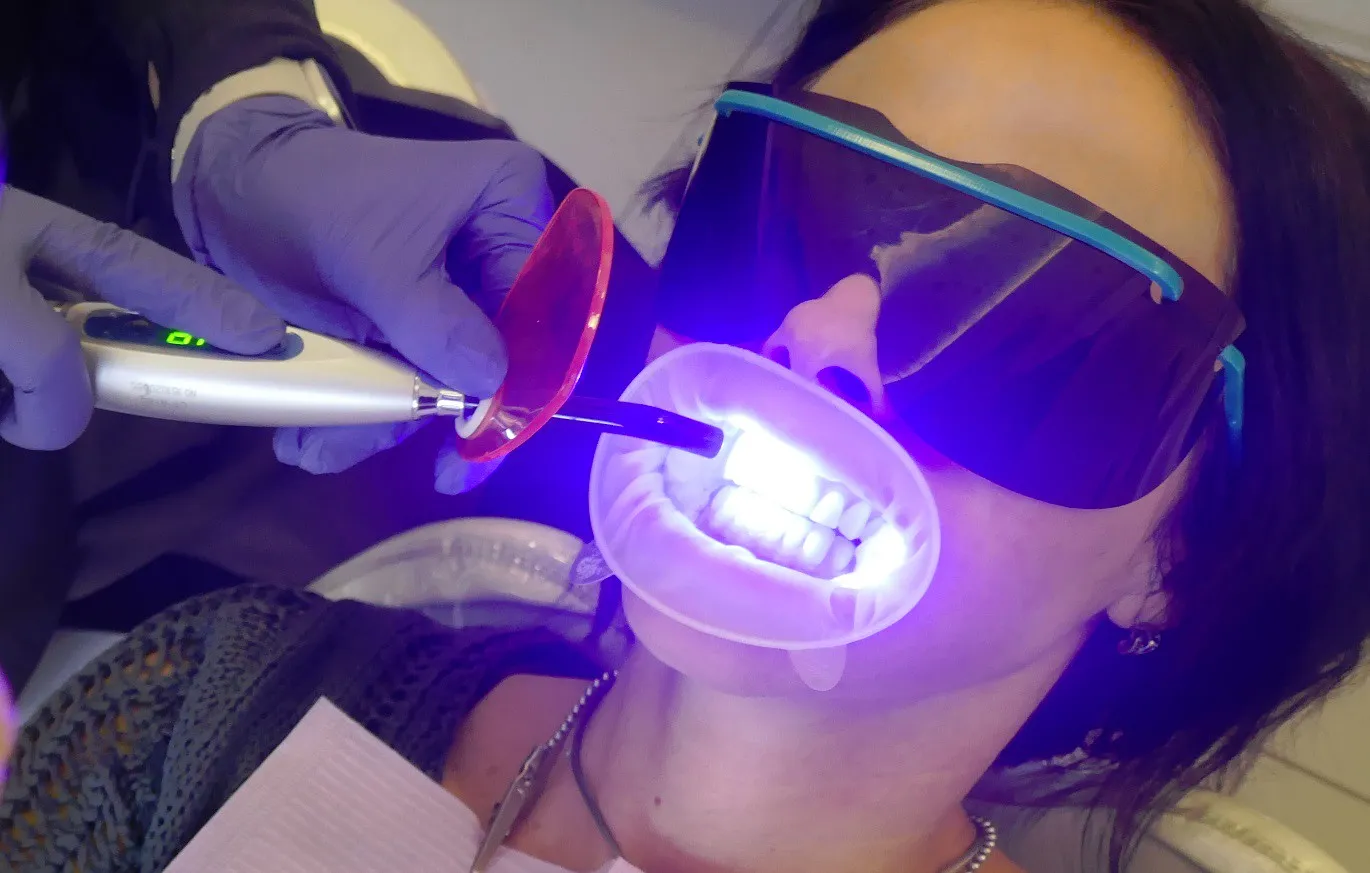What is UV Teeth Whitening
UV teeth whitening is a cosmetic dental procedure designed to brighten the color of your teeth. This method uses ultraviolet (UV) light in conjunction with a whitening agent to accelerate the process of removing stains and discoloration. It’s a popular choice for those seeking a quick and effective way to enhance their smile. Unlike over-the-counter products, UV teeth whitening is typically performed in a dentist’s office, ensuring professional supervision and potentially more dramatic results. The procedure aims to lift stains caused by coffee, tea, tobacco, and other factors, leaving you with a noticeably whiter and more radiant smile. The process usually involves isolating the teeth, applying the whitening agent, and then using UV light to activate and boost the agent’s effectiveness.
The Science Behind UV Teeth Whitening
Understanding the science behind UV teeth whitening provides insight into its effectiveness. The process involves a chemical reaction where the whitening agent, typically a hydrogen peroxide or carbamide peroxide solution, penetrates the enamel of the teeth. This agent breaks down the stain molecules, effectively lightening the overall color. The UV light acts as a catalyst, speeding up this chemical reaction. It emits specific wavelengths that interact with the whitening agent, increasing its ability to break down the stains. This interaction is what makes the procedure faster and often more effective than whitening methods that don’t utilize UV light. The intensity and duration of the UV light exposure are carefully controlled by the dental professional to ensure safety and optimal results.
How UV Light Enhances Whitening
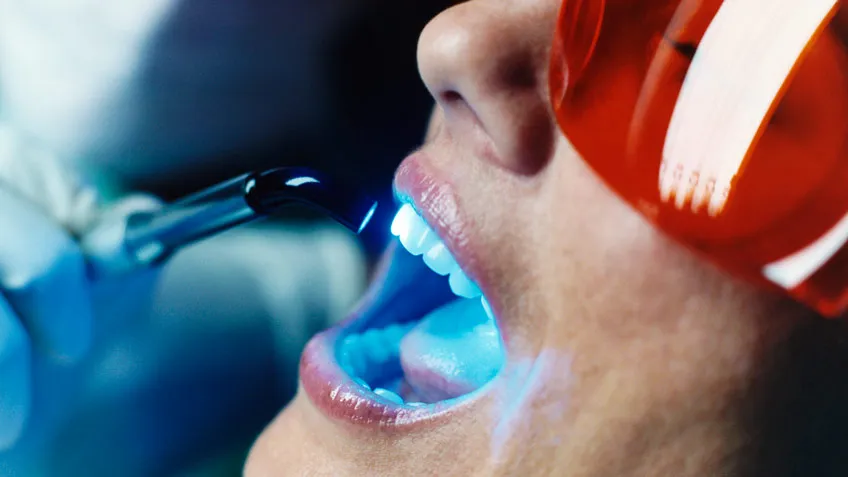
UV light, in the context of teeth whitening, doesn’t directly whiten the teeth. Instead, it serves as an activator, boosting the performance of the whitening agent. The specific wavelengths emitted by the UV lamp cause the hydrogen peroxide or carbamide peroxide to decompose more rapidly. This accelerated breakdown creates free radicals, which are highly reactive molecules. These free radicals then interact with the stain molecules embedded in the enamel, breaking them down and making them less visible. The use of UV light allows for a quicker and more efficient whitening process, often leading to more noticeable results in a shorter amount of time compared to other methods. This accelerated action is a key advantage of UV teeth whitening.
The Role of the Whitening Agent
The whitening agent is the core component of the UV teeth whitening process. Its primary role is to lift stains and discoloration from the teeth. Hydrogen peroxide and carbamide peroxide are the most commonly used agents. When applied to the teeth, these agents penetrate the enamel and dentin layers. The peroxide breaks down into oxygen molecules, which react with the stain molecules, causing them to break apart. The concentration of the whitening agent and the duration of its application are carefully calibrated by the dentist to maximize effectiveness while minimizing the risk of sensitivity or other side effects. The effectiveness of the agent, combined with the catalytic action of the UV light, determines the final whitening results.
The UV Teeth Whitening Procedure
Undergoing UV teeth whitening is a straightforward process, typically conducted in a dental office. The procedure involves several carefully executed steps to ensure safety and efficacy. A dental professional will guide you through the process, making sure you’re comfortable and informed at every stage. The entire session usually takes less than an hour, making it a convenient option for busy individuals seeking a brighter smile. Following the procedure, you’ll receive detailed aftercare instructions to maintain your results and minimize any potential sensitivity. The results are often immediate, with patients seeing a noticeable improvement in the whiteness of their teeth immediately after the procedure.
Preparation for UV Whitening
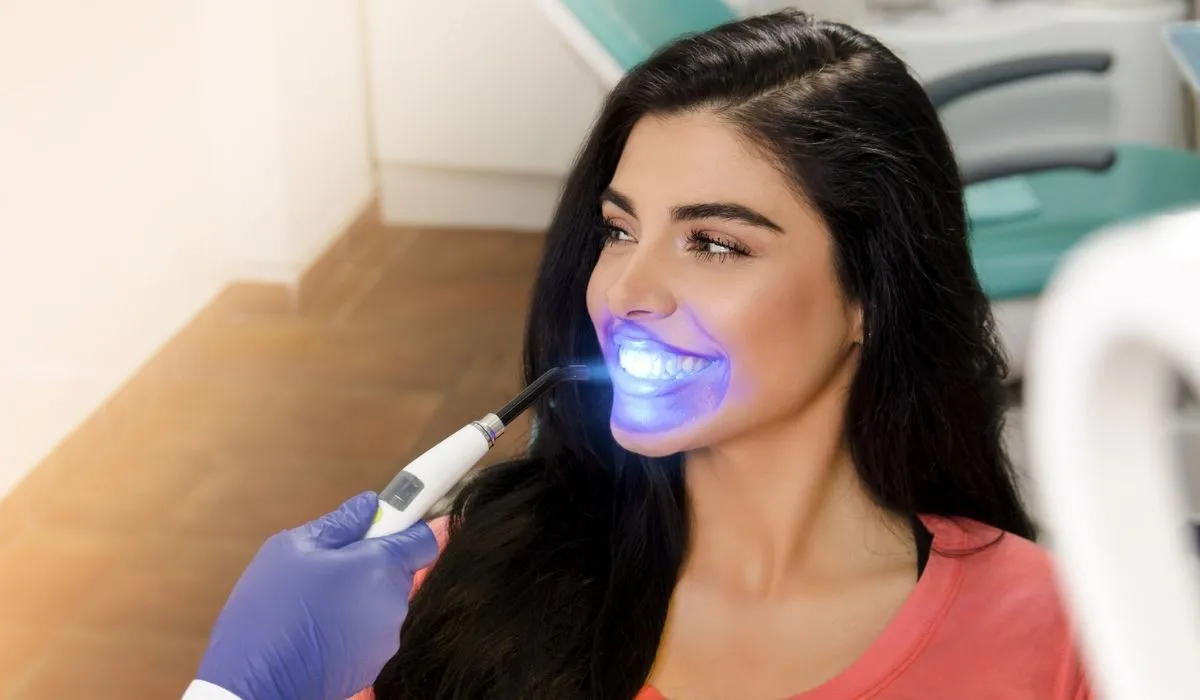
Prior to undergoing UV teeth whitening, preparation is crucial. Your dentist will begin with a thorough oral examination to assess your overall oral health. This includes checking for any existing dental issues, such as cavities or gum disease, as these conditions may need to be addressed before whitening. The dentist will also discuss your expectations and the potential outcomes of the procedure. A professional cleaning may be recommended to remove any surface stains and plaque, allowing the whitening agent to work more effectively. It’s also important to inform your dentist about any existing sensitivities, allergies, or medications you’re taking. This preparatory phase ensures the safety and success of the whitening process.
The Whitening Process Step-by-Step
The UV teeth whitening procedure typically unfolds in several key steps. First, your dentist will isolate your teeth, often using cheek retractors and a protective barrier to shield your gums and soft tissues from the whitening agent. Next, the whitening agent is carefully applied to the surface of your teeth. Once the agent is applied, the UV light is directed towards your teeth. This light activates the whitening agent, accelerating the stain-removal process. The UV light exposure is carefully controlled to ensure safety and maximize results. After the designated time, the whitening agent is removed, and your teeth are rinsed. Your dentist may apply a fluoride treatment to help reduce any sensitivity. The process might be repeated one or more times during the session, depending on the desired results.
Aftercare and Maintenance
Aftercare is crucial for maintaining the results of UV teeth whitening and ensuring the longevity of your brighter smile. Your dentist will provide detailed instructions on how to care for your teeth post-procedure. You’ll likely be advised to avoid foods and drinks that can stain your teeth, such as coffee, tea, red wine, and dark-colored berries, for at least the first 24 to 48 hours. Regular brushing and flossing are essential for maintaining good oral hygiene and preventing new stains from forming. Your dentist may recommend using a whitening toothpaste or mouthwash to help maintain the results. Regular dental check-ups and cleanings are also vital for keeping your teeth healthy and bright. Following these aftercare instructions can significantly extend the lifespan of your whitening results.
Potential Side Effects
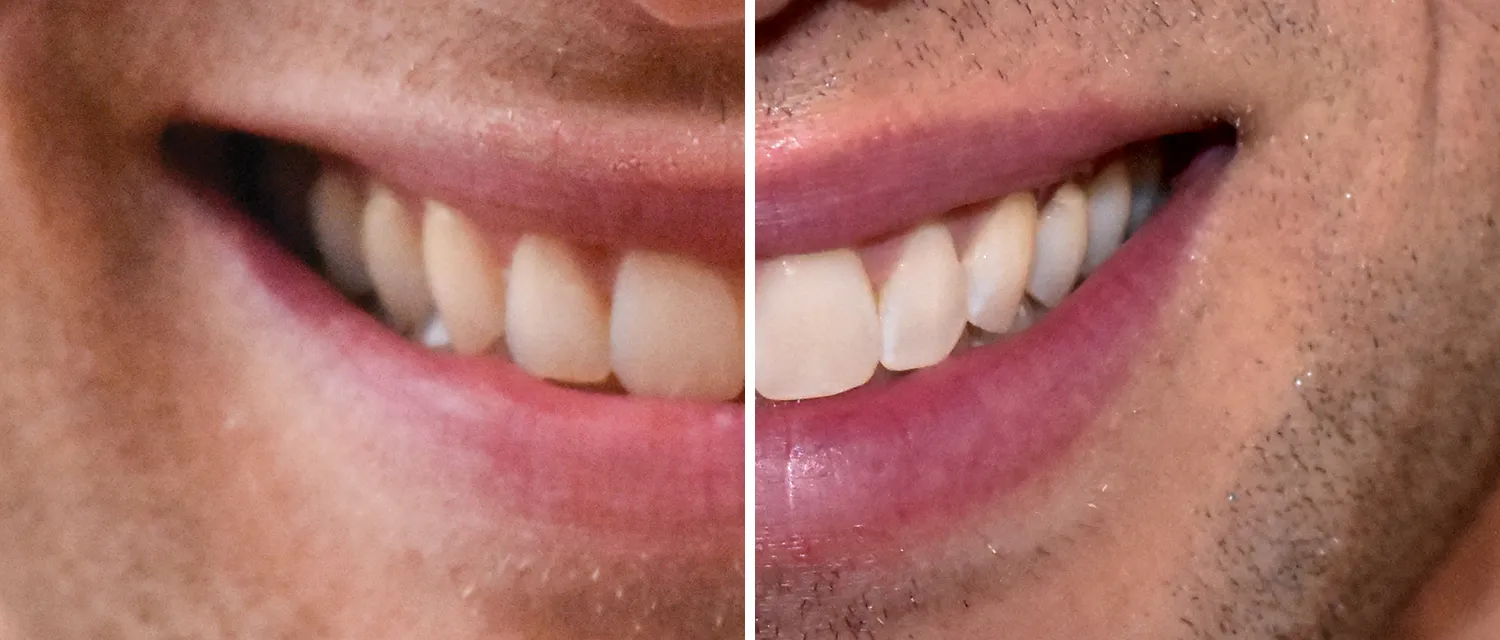
While UV teeth whitening is generally safe, it’s important to be aware of potential side effects. The most common side effect is temporary tooth sensitivity. This can manifest as a sharp, shooting pain when consuming hot or cold foods and drinks. This sensitivity usually subsides within a few days after the procedure. Some individuals may experience mild gum irritation, which typically resolves quickly. In rare cases, more significant side effects can occur. It’s important to inform your dentist if you experience any unusual symptoms. The dentist can provide guidance on managing any side effects and ensure your comfort throughout the process. Using desensitizing toothpaste and avoiding overly hot or cold foods can often help to mitigate sensitivity.
Maintaining Your Bright Smile
Maintaining your bright smile after UV teeth whitening involves a combination of good oral hygiene practices and lifestyle choices. Regularly brushing your teeth twice a day and flossing daily are fundamental. Using a whitening toothpaste can help remove surface stains and maintain the brightness of your teeth. Avoiding or limiting the consumption of stain-causing foods and drinks is crucial. If you do consume these items, rinsing your mouth with water afterward can help minimize staining. Regular dental check-ups and professional cleanings are essential for removing plaque and tartar, which can dull your smile. Your dentist may also recommend touch-up whitening treatments to maintain the desired level of brightness over time. A consistent approach to oral care will help you enjoy your brighter smile for an extended period.
Comparing UV Whitening with Other Methods
UV teeth whitening is just one of several teeth-whitening options available. Comparing it to other methods can help you make an informed decision. Over-the-counter whitening products, such as strips and trays, offer a more affordable option but may deliver less dramatic results. These products typically contain lower concentrations of whitening agents and do not utilize UV light. In-office whitening procedures, like UV whitening, usually provide faster and more noticeable results due to the higher concentration of the whitening agent and the use of activating light. Laser whitening is another in-office option that uses laser light to accelerate the whitening process. The choice between these methods depends on factors such as your budget, the level of whitening you desire, and your dentist’s recommendations. Consulting with a dentist is essential to determine the best approach for your individual needs.
Pros of UV Teeth Whitening
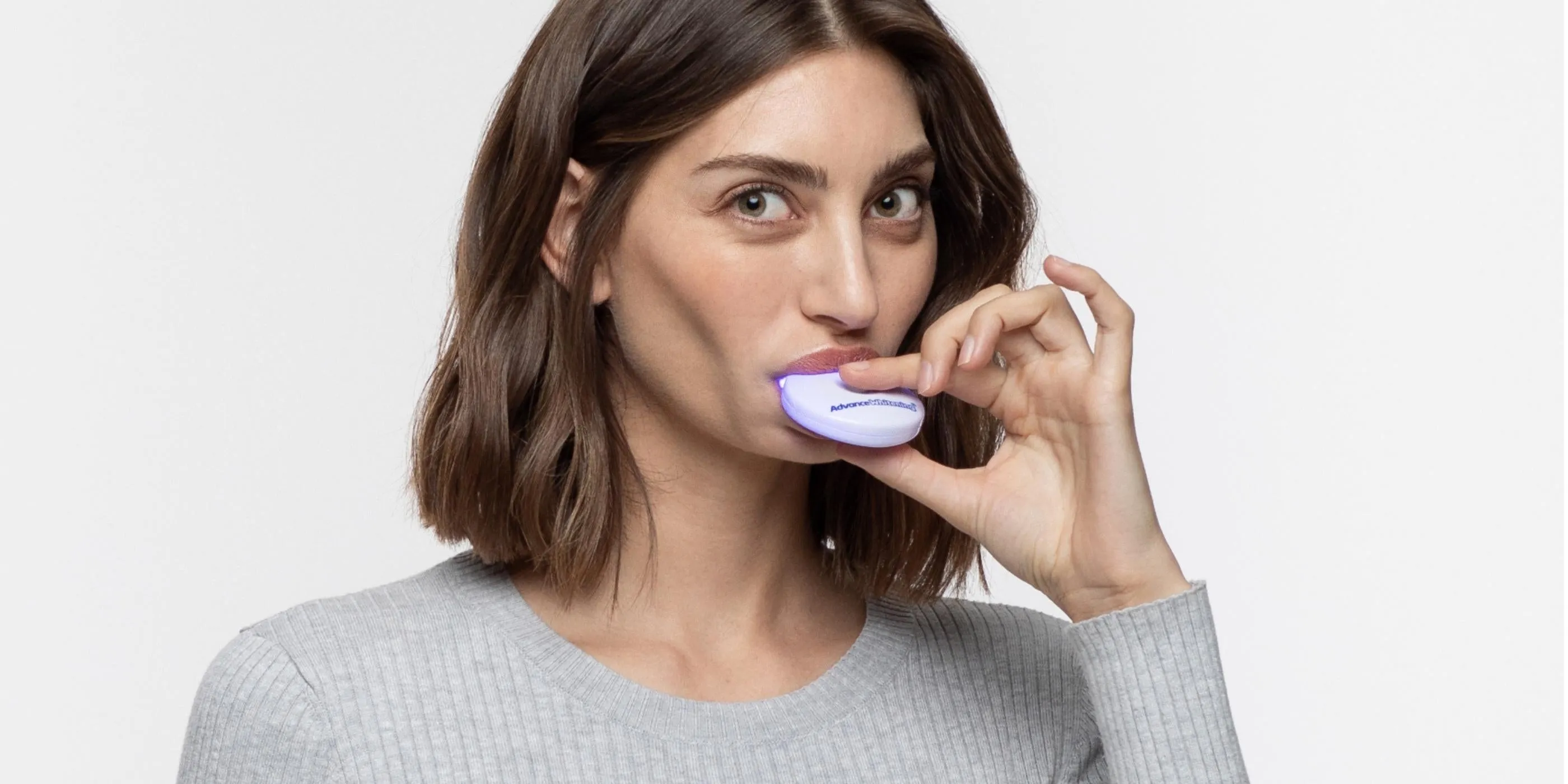
UV teeth whitening offers several advantages. It’s known for delivering fast and effective results, often achieving noticeable improvements in tooth shade in a single session. The procedure is performed in a dental office under professional supervision, ensuring safety and allowing for the use of higher-concentration whitening agents. The use of UV light as a catalyst enhances the effectiveness of the whitening process, leading to potentially more dramatic results compared to methods without light activation. The procedure is relatively quick, making it a convenient option for individuals with busy schedules. With proper aftercare, the results of UV teeth whitening can last for an extended period, providing a long-term solution for a brighter smile. The confidence boost associated with a whiter smile is another significant benefit.
Cons of UV Teeth Whitening
While UV teeth whitening is an effective procedure, there are potential drawbacks to consider. The cost of in-office whitening procedures is generally higher compared to over-the-counter options. Temporary tooth sensitivity is a common side effect, which can be uncomfortable for some individuals. The results are not permanent, and touch-up treatments may be needed over time to maintain the desired level of brightness. The effectiveness of the procedure can vary depending on the severity of the stains and the individual’s tooth enamel. There is also a potential risk of gum irritation, although this is usually mild and temporary. It’s important to discuss these potential downsides with your dentist before undergoing the procedure to ensure it’s the right choice for you.
